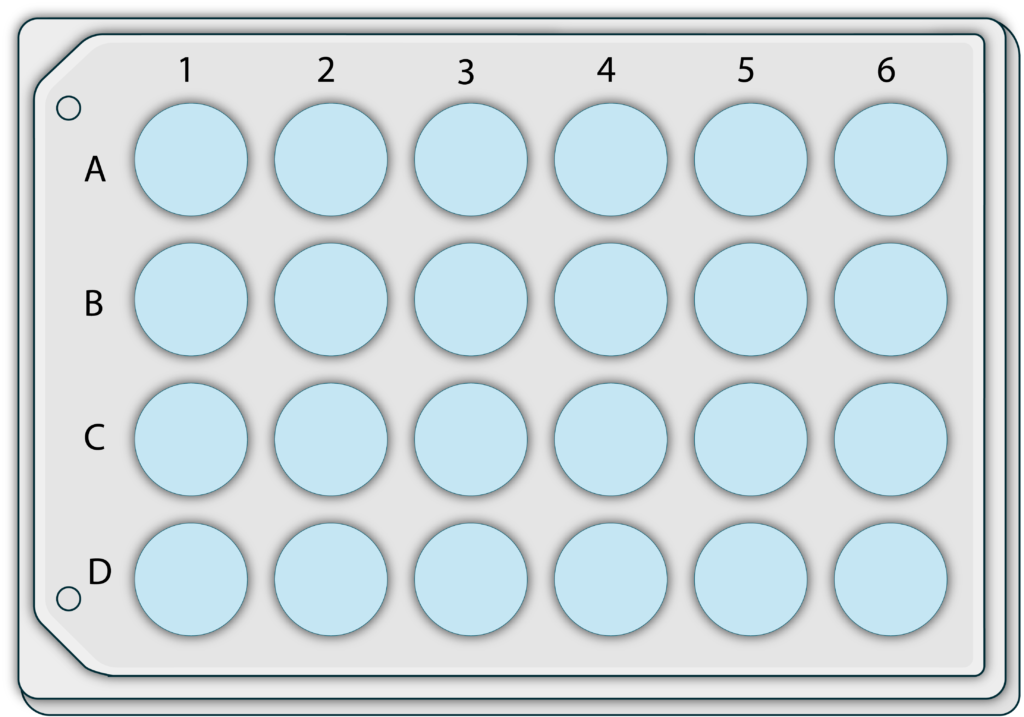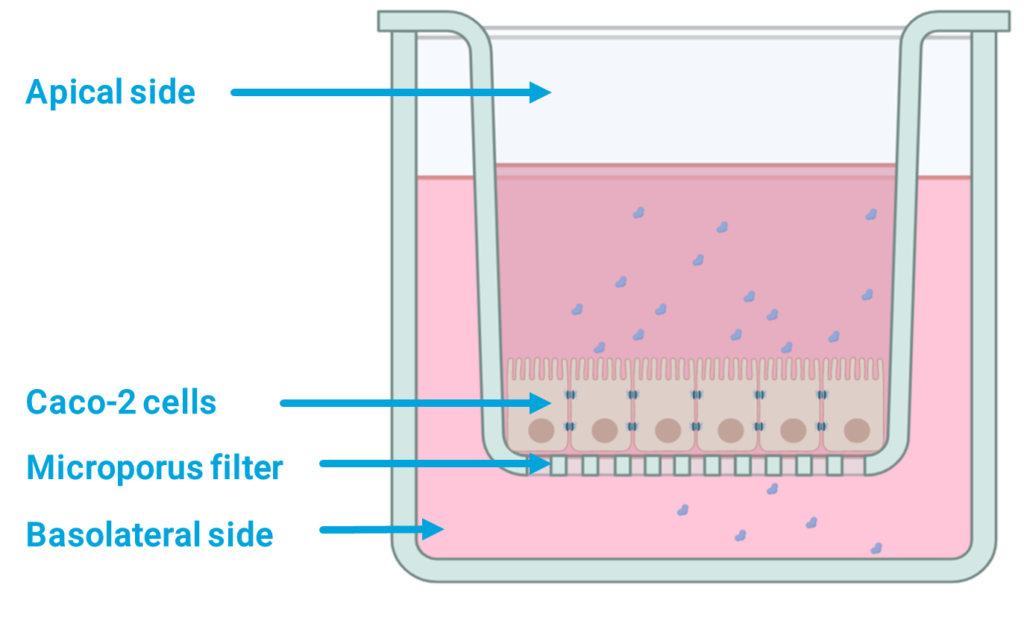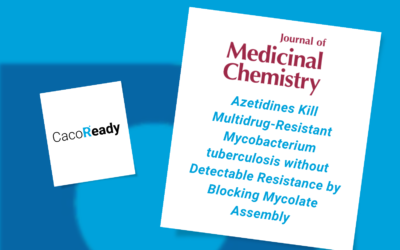In preclinical research, the choice of the appropriate well system format – whether it’s a transwell, non-transwell, or individual transwell – can significantly impact the outcome of experiments. Selecting the correct plate is crucial to working with permeability, toxicity, drug screening, or other assays. In this post, we’ll dive into our products’ different formats, common uses, and how you can manipulate them to suit your research needs.
Well Counts: Choosing between 24 or 96-Well Plates at ReadyCell
Researchers often face the decision of how many wells per plate they need. While 24-well plates offer versatility and are suitable for small to moderate-scale studies, 96-well plates are the preferred choice for high-throughput applications:
24-Well Plates
Overview
These plates are designed with 24 wells, making them suitable for experiments on a moderate scale. This format is available in CacoReady, CacoGoblet, and PreadyPort.
Utility
- This research tool is well-suited for studies involving a moderate number of samples and can be especially useful when resources are limited.
- It is commonly used for the initial screening of various experimental conditions, making it a practical choice for preliminary research investigations.
96-Well Plates
Overview
The 96-well plates are ideal for high-throughput experimentation. This format is available in CacoReady, PreadyPort, and PreadyTake.
Utility
- These tools are crucial for high-throughput screening and detailed assay procedures.
- They efficiently handle the simultaneous examination of multiple variables, making them well-suited for tasks like drug discovery, compound screening, and comprehensive data collection.


Transwell, no transwell, or individual transwell?
When it comes to the type of well, the first step is to decide between Transwell plates, plates with single transwell inserts, and plates without transwells. This section will explore these three distinct well formats and their implications for your experiments.
Transwell system
Overview
The integrated transwell format is recommended by reference to perform permeability assays. The fact that the cells are seeded in a transwell format differentiates them polarized, simulating the intestinal barrier. This format is available in CacoReady and PreadyPort.
Utility
- They are suitable for conducting permeability assays.
- Also ideal for drug transporter-interaction and DDI assays.
- They can be used for cytotoxicity testing, particularly in assays with stratification.
- Finally, they are well-suited for barrier function studies, including those involving blood-brain barrier models.
Manipulation
- The wells in these plates are integrated on the same surface, requiring simultaneous handling.
- The use of multipipettes is recommended for this type of plate.
Plates with single Transwell Inserts or individual transwells
Overview
These plates feature individual transwell inserts within each of the 24 wells. They are recommended for assays when the client requests an individual format for a particular test requiring individual mobility for different times/conditions or measurements. This format is available in CacoReady 24 and CacoGoblet 24.
Utility
- These tools are suitable for conducting permeability assays under varying conditions.
- They are also useful for performing individual cytotoxicity tests, particularly in assays that require stratification.
- Additionally, they are well-suited for barrier function studies, such as those involving blood-brain barrier models, at different time points.
Manipulation
- Manipulating these plates with individual transwell inserts involves moving each well separately from the apical parts. In this particular format, the number of individual wells cannot be customized; it will always consist of all 24 wells.
- Using single pipettes and multi pipettes is recommended for this type of plate.

Plates without Transwells
Overview
Plates without transwells are designed for traditional cell culture. For measurements like protein expression or toxicity, the non-transwell format is recommended. This format is available in CacoReady 24, CacoReady 96, and PreadyTake.
Utility
- These plates are well-suited for toxicity studies that involve colorimetry testing.
- They are also commonly used for standard cell culture and maintenance procedures.
- Finally, they are a suitable choice for assays that do not require the use of membrane inserts.
Manipulation
- Adjust well volume for different applications.
- The use of multipipettes is recommended for this type of plate.
In conclusion, choosing the optimal well-system format is essential in developing the experimental plan. Whether you focus on permeability evaluations, toxicity studies, drug screening, or various assays, the plate format you adopt will influence your outcomes.
If you still need further information or specific guidance, we invite you to contact our team via our contact form or at reagents@readycell.com. Our experts are at your disposal to assist you in your selection.





